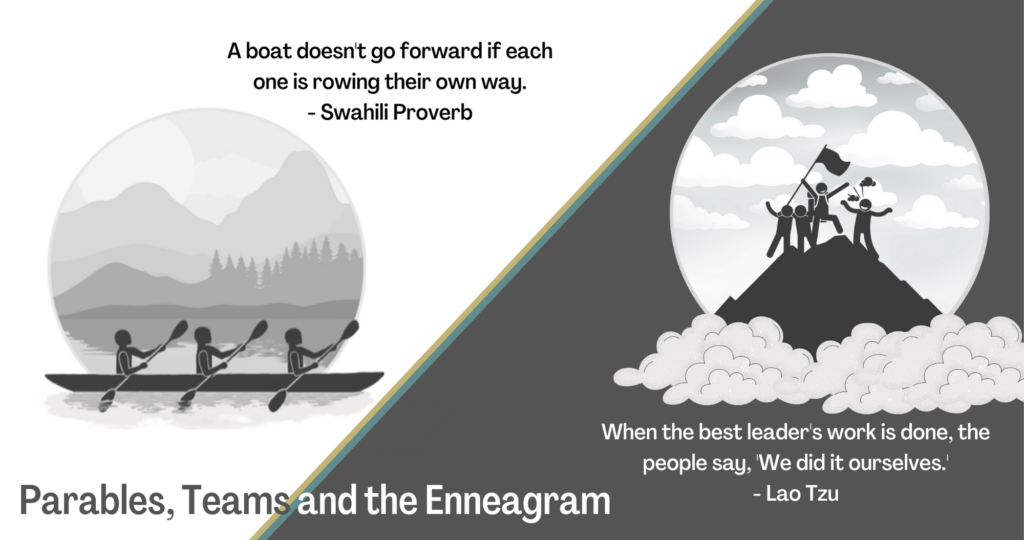The word parable has several meanings, but all definitions of a parable share this in common. A parable: a story or illustration that coveys an important principle. These two parables, one a Swahili proverb and the other a quote from Lao Tzu, communicate important lessons about high-performing teams. That is why my newest book, Transform Your Team with the Enneagram: Build Trust, Decrease Stress, and Increase Productivity, begins with the Swahili proverb and has the Lao Tzu proverb near the end.
Swahili proverb
If team members are each rowing in their own unique direction, forward movement for the team is nearly impossible. That is why the first order of business for teams is to define their common goal or goals and their optimal level of interdependence for achieving these goals.
Enneagram insights about team goals
People of each Enneagram type have highly specific ways they define goals. Understanding these varied views of ideal goals can help teams formulate their goals in such a way that all team members become aligned with all team members rowing in the same direction.
Enneagram Ones | clear, realistic, and purposeful goals
Enneagram Twos | common and meaningful goals, utilizing the talents of others
Enneagram Threes | specific and measurable goals, aligned to individual and organizational success
Enneagram Fours | significant and challenging goals, broad in scope, with specific benchmarks
Enneagram Fives | precise, concrete, useful, and manageable
Enneagram Sixes | substantial and meaningful for both the team and individuals
Enneagram Sevens | stimulating, energizing, visionary, and action-oriented
Enneagram Eights | reflect the big picture and move the organization forward
Enneagram Nines | concrete and meaningful, developed by consensus
Lao Tzu proverb
This proverb is near the book’s end, where the most important roles and behaviors of team leaders are described, along with supportive, practical, and clear development activities for leaders of each Enneagram type. Why is leadership described at the end of the book rather than the beginning? The Lao Tzu proverb explains this so well. A highly effective leader of any Enneagram type leads in such a way that the team truly experiences having created the success themselves. At the same time, the team truly understands how the leader contributed to this.
Enneagram insights
Team leaders of certain types need to loosen their control as a team develops and team members become increasingly empowered. This includes type Ones, Threes, and Eights. Other leaders need to exert more direction at the beginning of the team so that the team as a whole has enough clarity and clear boundaries to flourish. These include types Two, Seven, and Nine. So what about team leaders who are Fours, Fives, and Sixes? Team leaders of these types can better manage and modulate their intensity levels, allowing more space for team members to engage more fully. Fours and Sixes need to tone down their intensity and engagement, while Fives need to amplify their level of engagement and intensity so their teams feel their presence.
This blog series is based on Ginger’s book, Transform Your Team with the Enneagram: Build Trust, Decrease Stress, and Increase Productivity. Now available on Amazon!
Ginger Lapid-Bogda PhD, author of nine Enneagram books, is a speaker, consultant, trainer, and coach. She provides certification programs and training tools for business professionals around the world who want to bring the Enneagram into organizations with high-impact business applications. TheEnneagramInBusiness.com | ginger@theenneagraminbusiness.com


Comments are closed.